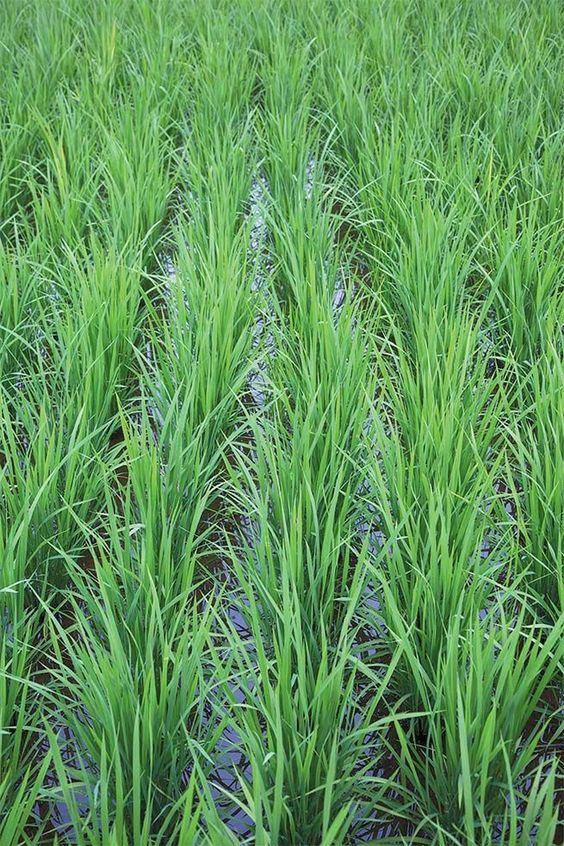Diseases in Garlic Plants: A Comprehensive Guide to Prevention and Management
Diseases in Garlic Plants, a versatile and widely cultivated crop, is susceptible to various diseases that can significantly impact its yield and quality. Recognizing these diseases and implementing appropriate management strategies is crucial for maintaining healthy garlic plants. This article provides a detailed overview of common garlic diseases, their symptoms, and prevention methods.
Contents
Fungal Diseases
Fungal Diseases in Garlic Plants are among the most prevalent threats to garlic plants. They thrive in moist and humid conditions, often leading to significant crop losses.
1. White Rot (Sclerotium cepivorum)
- Symptoms: Yellowing and wilting of leaves, white fluffy fungal growth at the base of the plant, and black sclerotia (hard fungal structures) on the garlic bulbs and roots.
- Prevention: Crop rotation, solarization, and the use of resistant garlic varieties.
2. Fusarium Basal Rot (Fusarium oxysporum f. sp. cepae)
- Symptoms: Yellowing, wilting, and stunting of plants. The base of the bulb becomes discolored and soft.
- Prevention: Crop rotation, soil disinfection, and planting healthy, disease-free cloves.
3. Purple Blotch (Alternaria porri)
- Symptoms: Purple or brown lesions on leaves, often starting at the tips. Lesions may expand and coalesce, causing leaf death.
- Prevention: Proper spacing of plants to improve air circulation, crop rotation, and fungicide applications.
4. Downy Mildew (Peronospora destructor)
- Symptoms: Yellowish-green spots on leaves, followed by a gray, fuzzy growth on the undersides. Leaves may become distorted and wilted.
- Prevention: Diseases in Garlic Plants,Good air circulation, avoidance of overhead irrigation, and fungicide applications.
5. Botrytis Rot (Botrytis allii)
- Symptoms: Water-soaked lesions on leaves and stems, often accompanied by a gray, moldy growth. Bulbs may become soft and rot.
- Prevention: Diseases in Garlic Plants,Good air circulation, avoidance of overhead irrigation, and fungicide applications.
6. Black Mold (Aspergillus niger)
- Symptoms: Black mold growth on the neck and outer scales of the bulb. Infected bulbs may become discolored and shriveled.
- Prevention: Diseases in Garlic Plants,Proper curing and storage conditions, avoiding excessive moisture.
Viral Diseases
Viral Diseases in Garlic Plants can also affect garlic plants, causing a range of symptoms.
1. Garlic Mosaic Virus (GarMV)
- Symptoms: Yellowing, mottling, and stunting of plants. Leaves may become distorted or curled.
- Prevention: Planting virus-free cloves and controlling aphids, which can transmit the virus.
2. Onion Yellow Dwarf Virus (OYDV)
- Symptoms: Yellowing, stunting, and leaf curling. Plants may become chlorotic or necrotic.
- Prevention: Planting virus-free cloves and controlling aphids.

Bacterial Diseases in Garlic Plants
Bacterial soft rot is one of the most common bacterial diseases affecting garlic plants. It is caused by the bacterium Erwinia carotovora subsp. carotovora.
Symptoms:
- Soft, water-soaked lesions on bulbs and leaves
- Discoloration of affected tissues
- Unpleasant odor
- Rapid decay of the plant
Prevention and Management:
- Proper Storage: Store garlic in a cool, dry place with good air circulation. Avoid storing garlic in humid or damp conditions, as this can promote bacterial growth.
- Avoid Excessive Moisture: Excessive moisture can create favorable conditions for bacterial soft rot. Practice proper irrigation and avoid overhead watering.
- Healthy Planting Material: Use disease-free garlic cloves for planting. Inspect cloves for signs of rot or discoloration before planting.
- Sanitation: Remove and destroy infected plants to prevent the spread of the disease. Disinfect tools and equipment between uses to avoid cross-contamination.
- Crop Rotation: Rotate garlic with non-host crops to reduce the buildup of bacteria in the soil.
- Biological Control: Some beneficial microorganisms can help suppress bacterial growth. Consider using biological control agents as part of an integrated pest management (IPM) approach.
Other Bacterial Diseases:
While bacterial soft rot is the most common bacterial disease affecting garlic, there are other bacterial pathogens that can cause problems:
- Blackleg: Caused by Pectobacterium carotovorum subsp. atrosepticum, blackleg can cause the base of the plant to rot and turn black.
- Bacterial Blight: Caused by Pseudomonas syringae pv. allii, bacterial blight can cause leaf spots, blights, and stem rot.
- Bacterial Wilt: Caused by Ralstonia solanacearum, bacterial wilt can cause wilting, yellowing, and stunting of plants.

Prevention and Management Strategies for Garlic Diseases
Diseases in Garlic Plants, a versatile and widely cultivated crop, is susceptible to various diseases that can significantly impact its yield and quality. To prevent and manage these diseases, consider the following strategies:
Crop Rotation
Diseases in Garlic Plants,Rotating garlic with non-host crops is a crucial practice to reduce the buildup of pathogens in the soil. By breaking the disease cycle, crop rotation can help prevent the recurrence of diseases that target specific plants. Common non-host crops for garlic include legumes, brassicas, and Solanaceae.
Soil Health
Diseases in Garlic Plants,Maintaining healthy soil is essential for garlic plant health and disease resistance. Practices like composting and cover cropping can improve soil structure, nutrient content, and microbial diversity. Healthy soil can better support plant growth and reduce the susceptibility to diseases.
Disease-Resistant Varieties
Diseases in Garlic Plants,Selecting disease-resistant garlic varieties is a proactive approach to prevent disease outbreaks. Many breeding programs have developed cultivars that exhibit resistance to specific pathogens, such as Fusarium basal rot, white rot, and purple blotch. By choosing resistant varieties, growers can significantly reduce the risk of disease-related losses.
Sanitation
Diseases in Garlic Plants,Proper sanitation practices are vital to prevent the spread of diseases within and between garlic fields. Remove and destroy infected plants, as well as any plant debris, to eliminate potential sources of pathogens. Disinfect tools and equipment between uses to avoid cross-contamination.
Proper Planting
Diseases in Garlic Plants,Planting healthy garlic cloves at the appropriate depth and spacing is essential for optimal growth and disease prevention. Planting cloves too deep can lead to rot, while planting them too shallow may expose them to environmental stress and diseases. Adequate spacing between plants promotes air circulation and reduces the risk of disease transmission.
Irrigation
Avoid overhead irrigation, as excessive moisture can create favorable conditions for fungal diseases. Instead, opt for drip irrigation or soaker hoses to deliver water directly to the root zone, minimizing the risk of foliar diseases. Proper irrigation management can help prevent diseases and maintain healthy garlic plants.
Pest Control
Managing pests, such as aphids, that can transmit viruses is crucial for garlic disease prevention. Monitor your plants regularly for signs of pests and implement appropriate control measures. Integrated pest management (IPM) strategies, which combine biological, cultural, and physical control methods, can effectively manage pests while minimizing environmental impact.
Storage
Diseases in Garlic Plants,Proper storage is essential to prevent post-harvest diseases. Store garlic in a cool, dry place with good air circulation. Avoid storing garlic in humid or damp conditions, as this can promote mold and rot. Curing garlic after harvest can help reduce moisture content and improve storage life.
Impact and Consequences
Diseases in Garlic Plants can have significant negative impacts on both individual growers and the broader agricultural industry. Here are some of the key consequences:
- Reduced Yield: Diseases can cause premature death of plants, stunting of growth, and bulb rot, leading to a substantial decrease in yield.
- Lower Quality: Infected garlic bulbs may be discolored, misshapen, or have reduced flavor and aroma. This can negatively impact their market value and acceptability.
- Economic Loss: Reduced yield and lower quality can result in significant economic losses for farmers, as well as for the entire agricultural sector.
- Spread to Other Crops: Some diseases can spread to other crops, particularly those in the Allium family (onions, shallots, leeks), causing further damage and economic losses.
- Environmental Impact: The use of chemical pesticides to control diseases can have negative environmental consequences, such as pollution of water bodies and harm to beneficial insects.

Countermeasures for Diseases in Garlic Plants
Diseases in Garlic Plants,To mitigate the impact of garlic plant diseases, a combination of preventive and curative measures can be employed.
Preventive Measures
- Crop Rotation: Rotating garlic with non-host crops can help reduce the buildup of pathogens in the soil. By breaking the disease cycle, crop rotation can prevent the recurrence of diseases that target specific plants.
- Soil Health: Maintaining healthy soil is crucial for garlic plant health and disease resistance. Practices like composting and cover cropping can improve soil structure, nutrient content, and microbial diversity. Healthy soil can better support plant growth and reduce the susceptibility to diseases.
- Disease-Resistant Varieties: Selecting disease-resistant garlic varieties is a proactive approach to prevent disease outbreaks. Many breeding programs have developed cultivars that exhibit resistance to specific pathogens, such as Fusarium basal rot, white rot, and purple blotch. By choosing resistant varieties, growers can significantly reduce the risk of disease-related losses.
- Sanitation: Proper sanitation practices are vital to prevent the spread of diseases within and between garlic fields. Remove and destroy infected plants, as well as any plant debris, to eliminate potential sources of pathogens. Disinfect tools and equipment between uses to avoid cross-contamination.
- Proper Planting: Planting healthy garlic cloves at the appropriate depth and spacing is essential for optimal growth and disease prevention. Planting cloves too deep can lead to rot, while planting them too shallow may expose them to environmental stress and diseases. Adequate spacing between plants promotes air circulation and reduces the risk of disease transmission.
- Irrigation: Avoid overhead irrigation, as excessive moisture can create favorable conditions for fungal diseases. Instead, opt for drip irrigation or soaker hoses to deliver water directly to the root zone, minimizing the risk of foliar diseases. Proper irrigation management can help prevent diseases and maintain healthy garlic plants.
- Pest Control: Managing pests, such as aphids, that can transmit viruses is crucial for garlic disease prevention. Monitor your plants regularly for signs of pests and implement appropriate control measures. Integrated pest management (IPM) strategies, which combine biological, cultural, and physical control methods, can effectively manage pests while minimizing environmental impact.
- Storage: Proper storage is essential to prevent post-harvest diseases. Store garlic in a cool, dry place with good air circulation. Avoid storing garlic in humid or damp conditions, as this can promote mold and rot. Curing garlic after harvest can help reduce moisture content and improve storage life.
Curative Measures
- Fungicides: Apply fungicides as needed to control fungal diseases. However, overuse of fungicides can lead to the development of resistant fungal strains. It is important to use fungicides judiciously and according to label instructions.
- Biological Control: Biological control agents, such as beneficial microorganisms, can be used to suppress pathogens. These organisms can compete with harmful pathogens for resources or produce substances that inhibit their growth.
- Integrated Pest Management (IPM): An IPM approach combines various methods to control pests and diseases while minimizing environmental impact. IPM strategies may include cultural practices, biological control, and the use of pesticides as a last resort.
By adopting a comprehensive approach that includes both preventive and curative measures, growers can effectively manage garlic plant diseases and ensure a healthy and productive crop.
Sources:
- Rasa Creek Farm: https://www.rasacreekfarm.com/garlic-store
- Cornell University: http://plantclinic.cornell.edu/factsheets.html
- Gardener’s Path: https://gardenerspath.com/
- Grow Organic: https://www.groworganic.com/collections/garlic-resource-center




